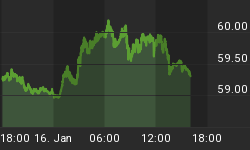SITUATION: In early 2009, Russia inaugurated its first liquefied natural gas (LNG) plant for East Asia at Sakhalin. After ramping up to three times its initial capacity, it will supply roughly 5% of world LNG. It is currently expected that Japan will receive two-thirds of initial exports with the rest going to South Korea and North America.
ANALYSIS:
Sakhalin is a long north-south island in Russia's Far East close to the mainland. Its southern tip is not far from Japan's northernmost point. Hydrocarbon deposits around it are estimated to contain 14 billion barrels of oil and 2.7 trillion cubic meters of natural gas. These are being developed by consortia including such major Western energy companies as Royal Dutch Shell and ExxonMobil. The latter operates the consortium that produces from the first of six planned stages of Sakhalin hydrocarbon development.
The Sakhalin-1 development comprises three deposits. The first is under production, the second is under development, and the third is under exploration.
Oil from the Chaivo deposit started to run through a pipeline to the De-Kastri terminal in Russia's Khabarovsk Krai in September 2006.
Drilling at the Oduptu oil and gas field began in May 2009, and commercial production began in September 2010. The product goes to the Chaivo processing facility and then to the De-Kastri for export.
The Arkutun-Dagi field is yet to be developed, but first oil is expected in 2014; it will also go to De-Kastri via Chaivo.
ExxonMobil and Gazprom disagree over export plans. Partners in Sakhalin-1 are an ExxonMobil subsidiary (30%, consortium operator), the Indian state company ONGC (30%), two affiliates of Rosneft (total 20%), and the SODECO consortium of Japanese firms (20%). ExxonMobil's subsidiary Exxon Neftegaz is negotiating with China National Petroleum Corporation to export the gas directly to China, while Gazprom needs it to fill the Sakhalin-Khabarovsk-Vladivostok pipeline that it is constructing, because its own volumes from Sakhalin-2 and Sakhalin-3 will not be enough for that.
BOTTOM LINE: Political pressure on ExxonMobil's Russian subsidiary Exxon Neftegaz in its dispute with Gazprom has recently increased. ExxonMobil signed a Production Sharing Agreement (PSA) for Sakhalin in 1996, and it is only one of three contracts in all of Russia that gives a stakeholder other than Gazprom the right to sell the hydrocarbon product from an energy deposit. But last month, a representative of Russia's budget-verification committee, called the Audit Chamber, hinted that ExxonMobil's place as project operator "may be taken up by Russian companies." This comes barely three months after ConocoPhillips, another US company, announced that it was selling its stake in Russia in Lukoil and leaving country because it could not find any good opportunities.
BP is still being slowly and painfully squeezed out the BP-TNK joint venture, and this follows by less than a decade the state expropriation of Yukos from its chief Mikhail Khodorkovsky, who is now facing sentencing on new charges brought just as he is finishing his original jail sentence. The new threats against ExxonMobil do not bode well for foreign investors in Russia, particularly in the energy sector. This threatens in the long run to affect also Shell, which is prominent in the development of Sakhalin-2, is estimated to hold 1 billion barrels of recoverable oil and 500 billion cubic meters of gas, needed by Gazprom for the aforementioned pipeline because development of other Sakhalin blocks have lagged so badly, even if exploratory drilling on Sakhalin-3 is under way.
At Sakhalin-3, recoverable reserves of hydrocarbons are confirmed at the Veninskii block (owned by Rosneft) while the Kirinskoe block (owned by Gazprom) has commercial amounts of gas estimated at almost 25 billion cubic meters, a quarter of totally estimated reserves and probably a few hundred million barrels of associated condensate. These are among the resources upon which Gazprom is counting to satisfy demand in the Russian Far East via the projected Sakhalin-Khabarovsk-Vladivostok and also to convert at the coast to LNG for export. This has become more crucial as development may also be delayed of the Chayanda field in Yakutia, from where product is planned to feed the still-to-be-constructed Yakutia-Khabarovsk-Vladivostok pipeline, the economic and also ecological viability of which is now under question.
Source: http://oilprice.com/Energy/Energy-General/Russias-Sakhalin-1-Natural-Gas-Development.html
By GIR Analysts for OilPrice.com who provide news and analysis on oil prices, alternative energy, commodities and finance. To find out more visit www.oilprice.com
















